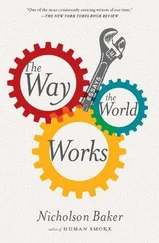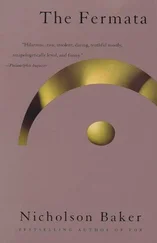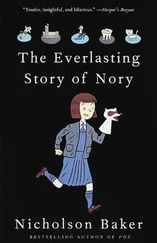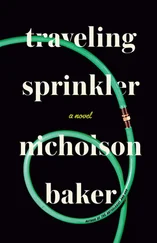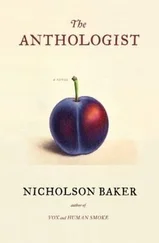As it turns out, Rider was wrong — later students of library progress 16have demonstrated that collections don’t double every sixteen years and have not done so in the past. No matter — Rider believed his figures to be true, or at he least hoped they were more or less true (he liked and wrote science fiction), and books do undeniably pile up fast. What is a library to do to contain this doubling and redoubling growth? It could build an annex or a new building and shelve the hideous growth in it — that’s what once would have happened. Ah, but the “storage warehouse” is, Rider holds, a “tacit confession of past failure” 17—all it does is change where the growth takes place, and “it, of itself, creates new expenses and fresh problems.” 18The library could adopt a severe policy of “weeding out” its stacks, but, says Rider, with justification, a library that weeds is a library that is “no longer providing its users with the material it has weeded out!”
Microphotography should have saved us long ago, but it hadn’t, and Fremont Rider knew why: librarians had been treating micro-materials “as though they were books.” They were not books — they were “a brand-new form, an utterly and completely and basically different form,” and therein lay our historic opportunity:
No one seems to have realized that, abruptly, for the first time in over two thousand years, libraries
were being offered a chance to begin all over again.
Rider’s version of the new beginning was the Microcard library: a set of catalog cards bearing the usual author-title information on the front, and the highly reduced images of every page printed in emulsion on the back. Since card catalogs already had cabinet space assigned to them, a complete Microcard replacement of the existing card catalog, accompanied by a disposal of the physical books it stood for, would result in a savings in storage cost “that comes gratifyingly close 19to 100 %.” Rider had grand visions for his Microcards — he even envisioned “micro-reading machines 20built into organs, pianos, and the like, [and] special reading machines on easels for orchestra use.”
He set up the non-profit Microcard Foundation, 21controlled by a board of trustees that included several prominent librarians (Keyes Metcalf, by then running Harvard’s libraries, and Archibald MacLeish, Librarian of Congress, among them), and with the help of Kodak and other companies he began to sell Microcard reproductions of volumes of genealogy and local history, publications of the Early English Text Society, and the Rolls Series of medieval chronicles. In the fifties, librarians at the Atomic Energy Commission 22became interested; they reproduced older reports on Microcards, so that weapons laboratories could throw out their originals; soon the AEC was distributing current reports on Microcards, too.
There were difficulties with the reading machines, though — for one thing, Microcards, being opaque, demanded lots of reflected light, and this light (in the cautious words of an early enthusiast) “produces heat which, 23when concentrated on the small section of the card being read, would be apt to have serious effects.” The installation of a cooling fan reduced the hazard of fire, but the viewed image never achieved enough contrast or crispness — it wasn’t as good as the screen-shadows of conventional microfilm, 24scratched and faded though they may be. Nonetheless, libraries made heavy investments in these book-substitutes: in 1954 there were twenty-five Microcard publishers (Barnes and Noble produced some titles) and 1,600 Microcard-viewing machines 25in the United States. All for naught. “To any one who has New England blood 26in his veins,” Rider wrote late in life, “waste — absolute, and completely unnecessary waste — is more than an economic loss: it is a venal sin.” Rider died a sinner in 1962.
But there is no lasting shame in taking a wrong turn. The shame comes in the fact that physical books were spent, wasted, too, as part of Rider’s brainsick spendthrift-frugality. For a topological question arises: how can one get all the pages of a given book onto the back of a card (or several cards, if the book is long), when book pages are double-sided? Rider’s answer was simple — destroy twice as many books:
All that we have to do
27
is to take
two
copies of the book that we are proposing to micro-copy, return these two copies to their original unbound form, and then
spread them out
How do we do this? We take the two copies; trim off all the waste paper margins on all the four sides of the pages; and then “reimpose” the resulting pages
in an order and layout especially adapted for the easy reading of them on the back of a catalog card
.
The notion that in these acts of petty vandalism we would be somehow “returning the books to their original unbound form” is a characteristic Rideresque flourish — as if the book’s binding were a bit of Victorian gingerbread, an excrescence, a superficial late addition to the primordial, Promethean page-heap. (Fortunately a number of Microcard publishers found ways to reproduce pages without disbinding — by re-photographing microphotographs — or concentrated their work on manuscript papers that weren’t bound in the first place. They also gradually abandoned the idea of opacity, and began using clear plastic rectangles through which light passed — microfiches — instead.)
Library leaders were hypnotized by Rider’s book. It was the talk of conferences; it gave a heroic forward tilt to the administrator’s cause. The journal College and Research Libraries published a symposium called “The Promise of Microprint,” in which Keyes Metcalf wrote that The Scholar and the Future of the Research Library “should be made required reading 28for library school students” and said that it “may well prove to be one of the most important books dealing with libraries in this generation.” A senior librarian from Brown University wrote excitedly that “it is difficult, 29to put it mildly, in the absence of some still more efficient space-saving device, not to embrace micro-cards as the panacea for libraries ‘growing pains’ ”; this informationalist dreamed of a time when libraries would have a fixed size: “When will the rate at which material is published on micro-cards permit a library to withdraw… enough books from its shelves to balance the amount of material which is newly published in conventional book form and must be added?” Ever the self-promoter, Rider includes in his 1955 autobiography, And Master of None, a page full of praise 30for The Scholar from eminent librarians. Archibald MacLeish: “a superb job, superbly done”; James T. Babb of Yale: “by far the most interesting and stimulating piece of library literature I have tackled in a long time”; Harold Leupp of the University of California: “the most constructive approach to the problem I have heard from any source”; William Warner Bishop, of the University of Michigan: “The book fairly takes my breath away. You have given librarians much to think about and to think about furiously.”
Never mind that Rider’s “constructive approach” advocated the dissection (in matched pairs) and deacquisition of millions of volumes over time (excepting, to be sure, “prestige material,” gift collections, and some special cases — books with color illustrations, for instance); never mind that Rider was proposing that the central research trove of a large academic library would shrivel, “by inexorable mathematical law,” into “endless aisles of [Microcard] file cases,” aisles in which the scholar would, Rider wrote, “find most of his materials, and do most of his work.” One might have expected library generals to have kept their distance from this amiable entrepreneurial crank. Instead, these furious thinkers served on his Microcard Foundation and Microcard Committee; they helped him plan and standardize and refine his conception; they bought his product; they were clearly intrigued by the potential despoliation that his proposal held out to them.
Читать дальше



